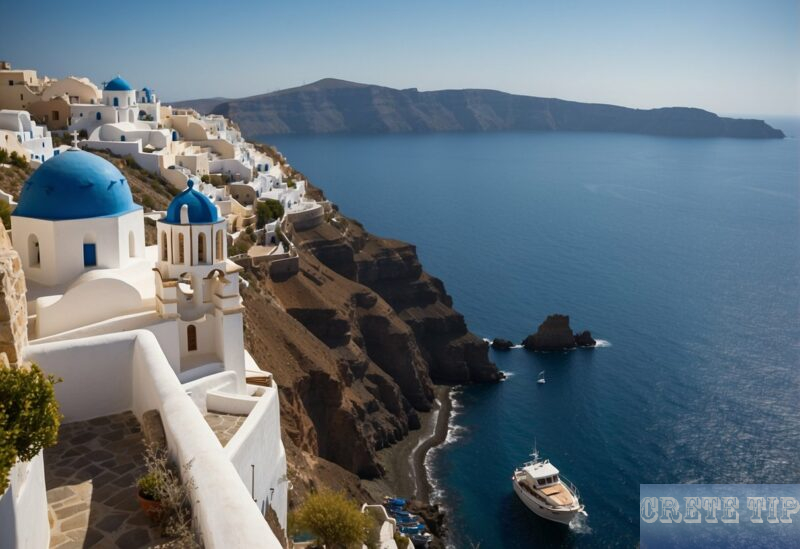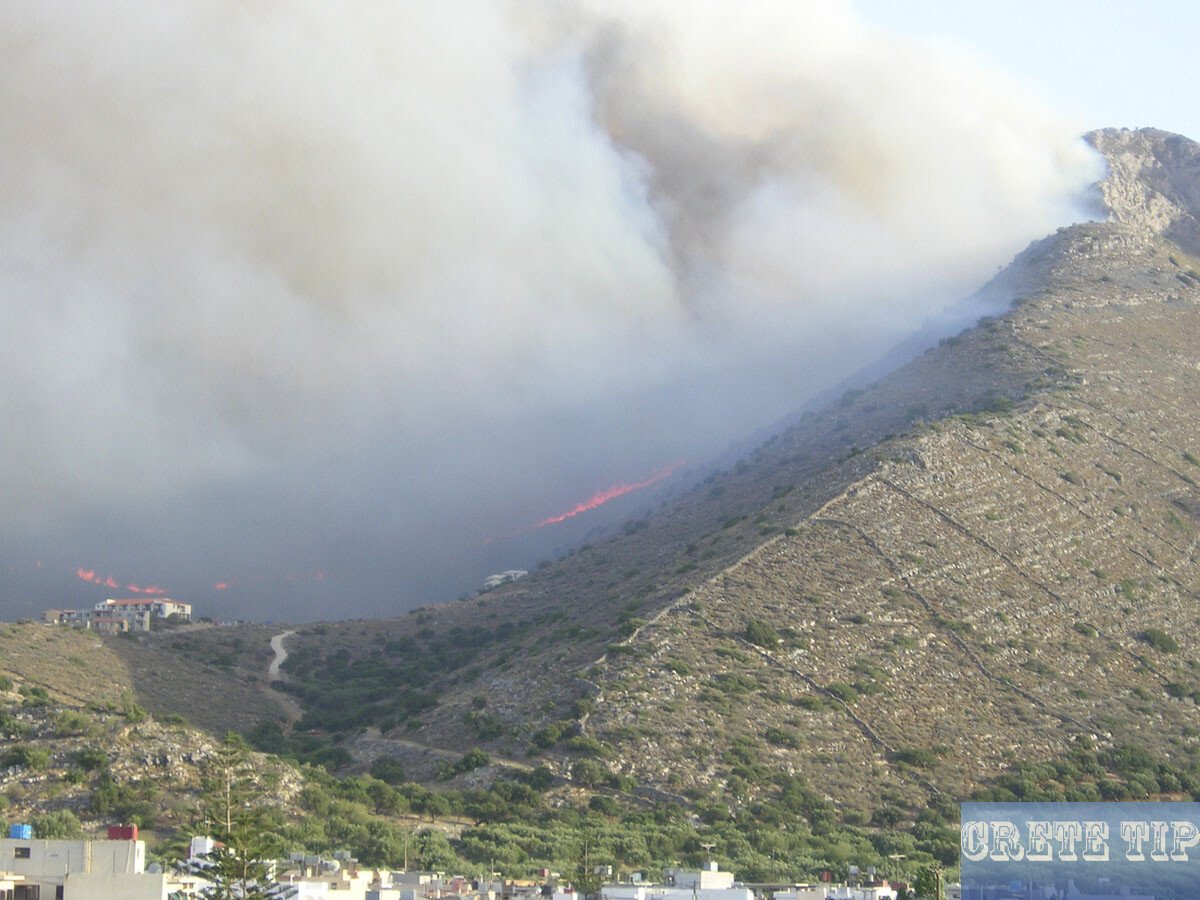Ancient Cretan horse breeds: Giorgalid or Messara horses.
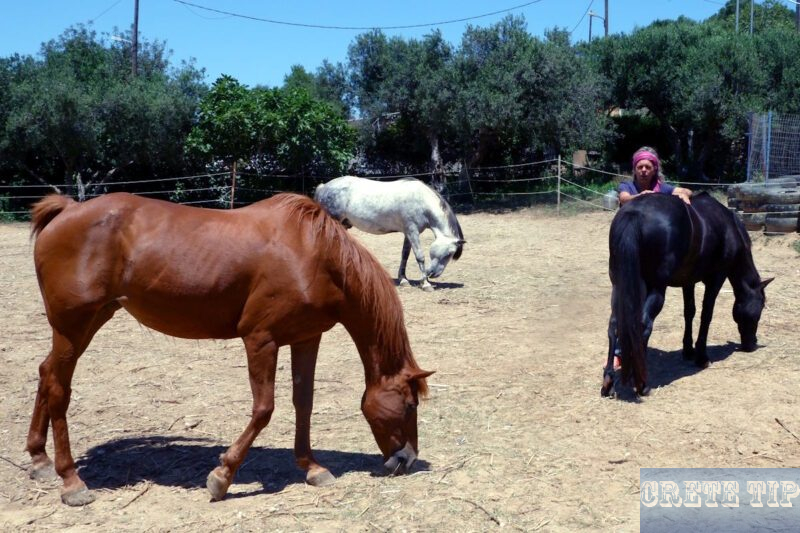
The Giorgalid horses of Crete
The horses native to Crete are a bit of a marvel, honestly. They’re a rare breed, famous for their endurance, agility, and a temperament that’s not quite like any other.
This breed has its roots tangled deep in Cretan history and culture. It’s hard to overstate how much they’ve shaped local tradition over the years.
But despite all that, they’re teetering on the edge of extinction. That’s a tough pill to swallow for anyone who cares about Crete’s heritage.
People have stepped up to protect these horses, realizing they really need space to roam. Letting them graze in open lands, living in herds—turns out, that’s when they’re at their best.
Horses that run free with their own kind? They just seem happier, healthier, and, surprisingly, more social. It kind of flies in the face of the old worry that wild or free-ranging horses would be impossible to handle.
In Ierapetra, there’s now a dedicated centre. Their whole mission is to study, rescue, and care for the Cretan horse.
They run all sorts of activities to keep the breed going. If you’re curious, there’s even a website with more info and ways to get involved.
Back in 1895, under Ottoman rule, the local government officially recognized the breed. They put strict rules in place—no crossbreeding, no exporting these horses.
The modern Greek state didn’t get around to formal recognition until 1996. Even then, it left a lot to be desired when it came to actual conservation.
Characteristic |
Details |
|---|---|
Breed Type |
Indigenous to Crete |
Key Traits |
Endurance, agility, distinctive character |
Conservation Status |
Endangered, at risk of disappearing |
Living Conditions |
Prefer open spaces with social groups |
Historical Protection |
Recognized as local breed in 1895 under Ottoman rule; export and crossbreeding banned |
Modern Recognition |
Officially acknowledged not before 1996 by the Greek state, with challenges |
Key points about the breed:
- It is a rare, local horse breed from Crete.
- Known for physical strength and good movement.
- Best cared for in open, social environments.
- Faces extinction without continued protection efforts.
- Protected historically but with gaps in modern conservation.
The breed’s future really hinges on ongoing rescue work and a shift toward more natural care. Education and awareness are a big part of keeping this piece of Greece’s heritage alive.
The Messara Horse
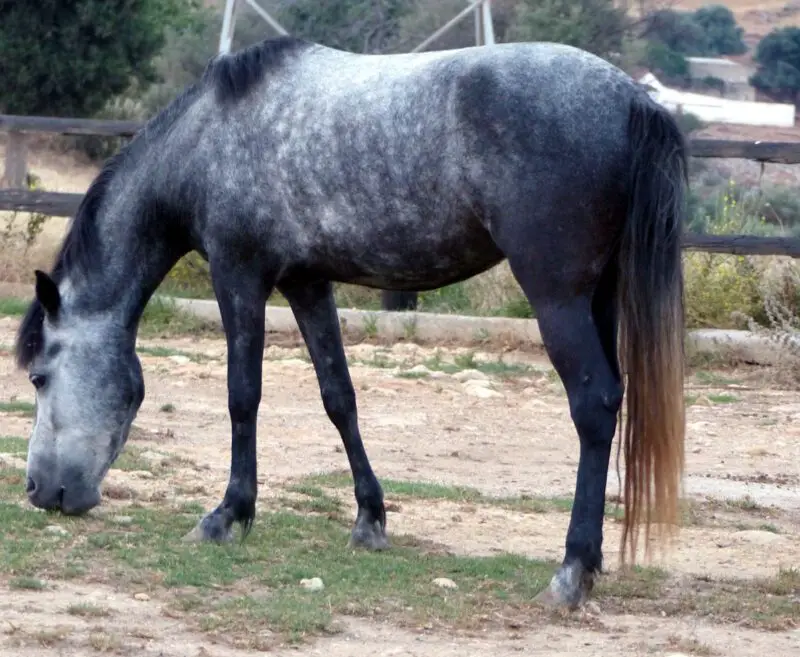
The Messara Horse comes straight out of Crete, Greece. It’s actually one of Europe’s oldest horse breeds—how cool is that?
People love it for its smooth, natural gait. Riding one is just easy on the body, stable and comfortable.
There’s a nice blend of strength and agility here, thanks to its origins. Local mares were crossed with Arabian stallions back in the 17th century, and that’s where the Messara gets a lot of its character.
They’re not huge—somewhere between 12.2 and 14 hands high, or about 127 to 142 centimeters. You’ll see them in a mix of colors: bay, dark brown, black, and grey.
Even though they’re not tall, Messara horses have a solid, powerful look. They’re built for endurance and agility more than raw speed, honestly.
Dig into their history and you’ll find roots stretching way back, even to the Pre-Minoan period. Archaeological finds point to a long, storied presence on the island.
Some folks think the Messara might be connected to the ancient Tarpan horse. You see hints of them in old Minoan art and coins.
Key Features of the Messara Horse
Trait |
Description |
|---|---|
Height |
12.2 to 14 hands (127–142 cm) |
Coat Colours |
Bay, brown, black, grey |
Gait |
Smooth, natural pacing gait |
Build |
Compact, strong, agile |
Temperament |
Calm, steady, suitable for various uses |
The 20th century was rough for the breed. During World War II, a lot of Messara horses were sent off to Albania, which gutted their population.
By the 1990s, there were only a handful left. It was a close call—extinction seemed almost certain.
Back in the day, these horses were the backbone of transportation and farm work. They were also prized for crossbreeding, mostly because they could handle tough conditions and keep going.
Preservation Efforts and Current Role
Things started turning around in the 1990s. Crete set up a formal stud book to keep track and protect the breed’s lineage.
Breeding programs now focus on boosting numbers and keeping the gene pool healthy. The horses have found new roles in tourism and education, too.
These days, you’ll see Messara horses used for therapeutic riding, thanks to their gentle, steady nature. Scientists are also interested in how well they adapt and thrive in natural environments—there’s a lot to learn from them.
On Crete, eco-tourism projects have popped up, letting visitors ride through wild landscapes on these ancient horses. It’s a hands-on way to keep the breed in the spotlight and help fund their conservation.
All in all, the Messara Horse still stands as a living symbol of Greece’s equestrian tradition. And honestly, seeing them in their element is something special.
With horses in the here and now
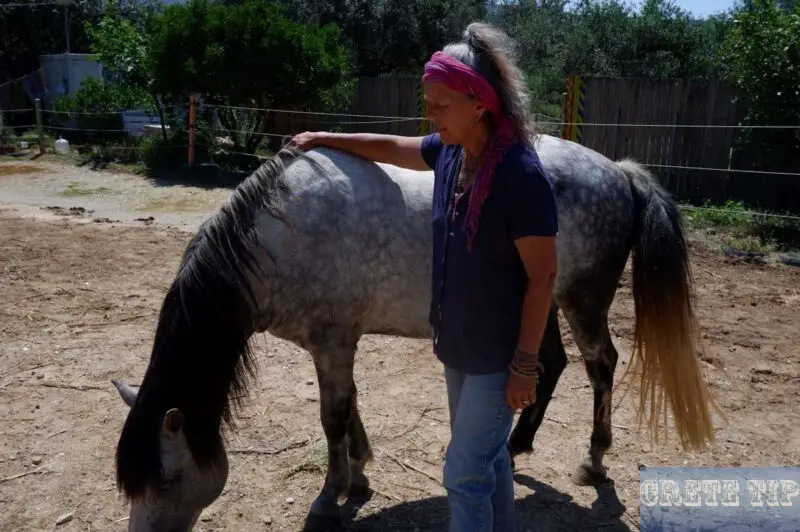
Not far from picturesque Sitia in eastern Crete, about 1.5 miles south along the road to Ierapetra (in the village of Piskokefalo turn east to the next village Kato Episkopi, there in front of the church clearly standing out again to the right to the end of the village) is the horse club of the ‘Friends of with horses in the here and now‘ of Andrea Patrizia Wiener-Angelakis.
With two dogs and currently three horses of ancient Greek breeds, as well as two specimens of the rare Skyros ponies (which originally came from Corfu from a project for the preservation of the breed there) Andrea lives on the farm all year round (but it closes at 7 pm for visitors).
All horses are also not shod with horseshoes.
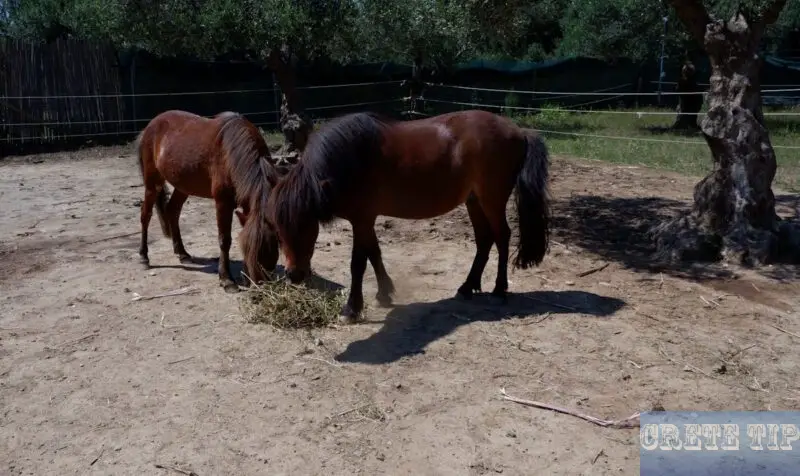
Body language with horses (video)
The daily training can be seen in the horses, with which she can communicate in an amazing way with the help of body language, as can be seen beautifully in the following video:
The association supports the educational and therapeutic use of horses. This includes mainly ‘groundwork‘, but also riding lessons and riding. Groundwork means that you do not get on the horse and ride, but first learn how to deal with him from the ground at ‘eye level’.
To take courses or lessons with Andrea and her friends, no previous experience with horses is necessary, because the first steps are learned through ‘groundwork’.
Therefore, she is happy about all visitors and of course tourists, who would like to learn the right way to handle their beautiful Greek horses on Crete.
In addition, individual one-on-one training with overnight accommodation is offered. Besides, there are also events like yoga, parties and dance evenings, all together with or at the horses. From time to time, there are also seminars and workshops with qualified professionals and trainers.
These events are always announced in advance on the Facebook page of Association of friends with Horses in Here & Now.

Why More People Are Owning Horses in Rethymno
In Rethymno, horses aren’t just animals—they’re part of the fabric of daily life. Locals often talk about the calmness and real affection these animals bring, and honestly, who can blame them?
As more people here decide to own horses, that connection keeps growing. Horses have a way of finding their place in people’s routines, almost like they belong there.
But let’s be real: owning a horse isn’t just about the joy. It takes time, patience, and a fair bit of know-how.
Most folks start by learning the ropes—feeding schedules, grooming, and all the little details that keep a horse healthy. If something goes wrong, like an illness, you’ve got to act quickly, and sometimes that means calling in an expert.
Training’s a big deal too. Some owners work with professionals to make sure their horses are well-behaved and safe to ride.
Getting horses used to others is another thing on the list. Riders often set up group outings, so the animals get comfortable being around their own kind.
Those regular walks and shared exercises? They don’t just help the horse—they help the owner build trust, too. It’s a give-and-take that shows up in the way they interact.
There’s a strong tie to tradition here. Rethymno’s got a long history of respecting horses, and a lot of people feel like they’re carrying that forward.
Advice and stories about horse care get passed down—sometimes over coffee, sometimes at the stable. It’s a bit of an unspoken bond in the community.
People don’t just pick any horse, either. Certain breeds are favored for their gait or temperament, which just fit the local style and landscape better.
Choosing the right breed isn’t just practical—it helps keep local horse types thriving, which a lot of owners care about.
Key reasons people in Rethymno choose to own horses include:
Reason |
Explanation |
|---|---|
Emotional support |
Horses offer calmness, companionship, and unconditional love. |
Tradition |
Keeping horses honours local history and cultural identity. |
Learning and skill |
Owners develop knowledge in care, training, and riding. |
Social connections |
Group rides and socialising promote community and horse’s well-being. |
Breed characteristics |
Selecting local breeds fits riding needs and helps preserve the breed. |



